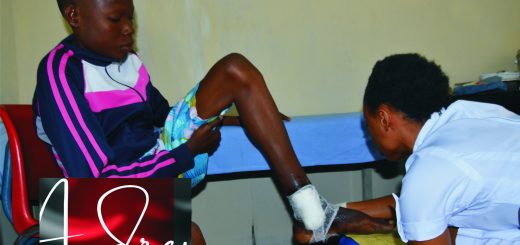Boston Children’s Hospital receives grant for sickle cell disease research
December 30, 2018
ADDED TO EMAIL ALERTS

David A. Williams
The Bill and Melinda Gates Foundation awarded a $1.5 million grant to Boston Children’s Hospital to research and develop gene therapy treatment for sickle cell disease.
The research will be directed toward gene therapy methods that can be applied in developing regions of the world, where sickle cell disease incidence is high.
SEE ALSO
- Gene therapy product shows early promise in sickle cell disease
- Autologous gene therapy shows promise for sickle cell disease
- Novel transplant protocol potentially curative approach for sickle cell disease
“While gene therapies are currently confined to a few research hospitals in the U.S. and other developed countries, our long-term goal is to make this treatment available to patients in developing countries — and we have already begun to think about how to translate this specialized, potentially curative therapy,” David A. Williams, MD, chief scientific officer and senior vice president of Boston Children’s Hospital and president of Dana-Farber/Boston Children’s Cancer and Blood Disorders Center, said in a press release.
Williams — who will lead the collaborative project with Paula Hammond, PhD, of the Koch Institute, Christian Brendel, PhD, of Dana-Farber/Boston Children’s, Harvey Lodish, PhD, of the Whitehead Institute, and David Scadden, MD, of Massachusetts General Hospital — aims to adapt methods used in a current Dana-Farber/Boston Children’s clinical gene therapy trial for sickle cell disease. The trial is evaluating a means of suppressing BCL11A to enable patients to make a fetal, nonsickling form of hemoglobin.
Researchers also plan to evaluate in vivo applications of gene therapy — or the direct injection of the gene therapy vector into the bloodstream or target organ — to make the approach more accessible in areas without a developed health care system. An in vivo approach may require less complex manufacturing and shorter hospital stays.
“Ultimately, an in vivo approach, in which a gene or inhibitory RNA is delivered directly to the body, is likely to be optimal for broadening global access to gene therapy for sickle cell disease,” Williams said. “Our vision is to apply our expertise in bioengineering and vector technology, hematology and stem cell engraftment with minimal marrow conditioning, and closed and simplified manufacturing to ‘commoditize’ gene therapy.”
More than an estimated $1 billion is spent for the care of individuals with sickle cell disease per year in the United States. The impact of the disease is greatest in sub-Saharan Africa and India.
With the grant, Williams and colleagues plan to evaluate various gene delivery methods to solve current bioengineering and manufacturing constraints.
“We will look at new technologies of nonviral methods for introducing the therapeutic gene into stem cells that could help standardize gene therapies and make them more available and affordable,” he said.




Recent Comments